2018 Toyota 86 Tires & Services
Get Started
Complete Auto Care for Your 2018 Toyota 86
-
TIRES FOR YOUR 2018 Toyota 86 View Tire Info GET TIRE PRICING
-
REPAIR FOR YOUR 2018 Toyota 86 View Repair Info SCHEDULE REPAIR
-
MAINTENANCE FOR YOUR 2018 Toyota 86 View Maintenance Info SCHEDULE MAINTENANCE
-
OFFERS FOR YOUR 2018 Toyota 86 Limited Time Tire Offers VIEW ALL COUPONS
2018 Toyota 86 Tires
Recommended Tires | Tire Information
2018 Toyota 86 Tires Sizes, Speed Ratings, and Inflation
Not sure about your 2018 Toyota 86 tire size? Use the following chart to find information on tire size, speed rating, and inflation.
| Trim Level | Speed Rating | Inflation in PSI F/R | Tire Size |
|---|---|---|---|
| 2018 Toyota 86 GT* | W | 35 PSI/35 PSI | 215/45R17 |
| 2018 Toyota 86 GT* | V | 35 PSI/35 PSI | P215/45R17 |
| 2018 Toyota 86 Base* | V | 35 PSI/35 PSI | P215/45R17 |
| 2018 Toyota 86 Base* | W | 35 PSI/35 PSI | 215/45R17 |
|
2018 Toyota 86 GT* Speed Rating: W Inflation F/R: 35 PSI/35 PSI |
|
2018 Toyota 86 GT* Speed Rating: V Inflation F/R: 35 PSI/35 PSI |
|
2018 Toyota 86 Base* Speed Rating: V Inflation F/R: 35 PSI/35 PSI |
|
2018 Toyota 86 Base* Speed Rating: W Inflation F/R: 35 PSI/35 PSI |
* Note: these models have different tire sizes depending on vehicle options.
Recommended Tires for Your 2018 Toyota 86
What tires are best for a 2018 Toyota 86? Check out the following tire brands and types.
 Blizzak WS90
Blizzak WS90
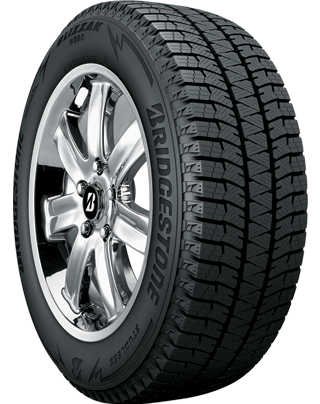
- No warranty
- Winter
- Winter
 Potenza RE71RS
Potenza RE71RS
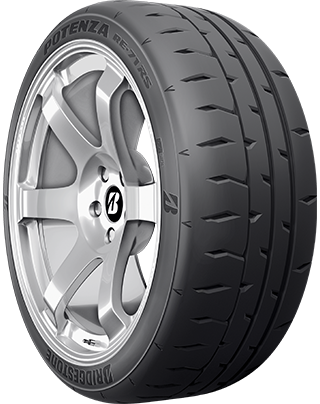
- No warranty
- Summer
- Performance
 Potenza Sport
Potenza Sport
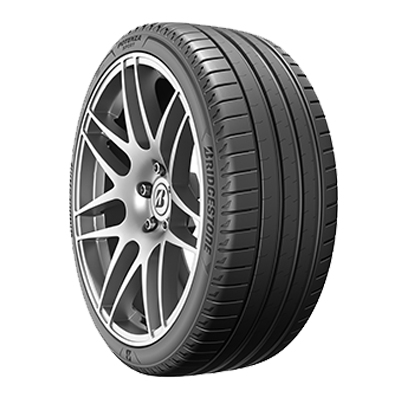
- Platinum Pact Limited Warranty
- Summer
- Performance
 Potenza Sport AS
Potenza Sport AS
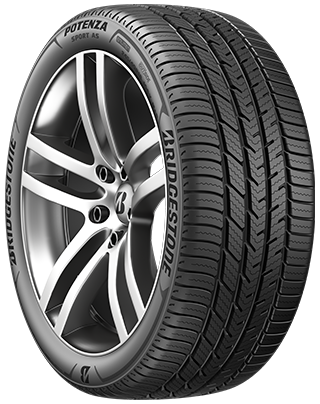
- Platinum Pact Limited Warranty
- All-Season
- Performance
 DriveGuard Plus
DriveGuard Plus
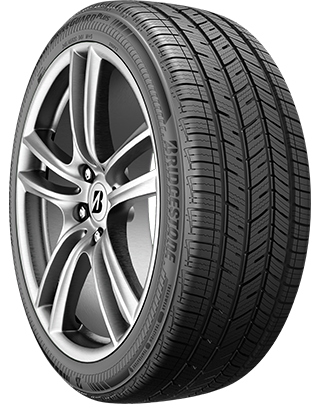
- Platinum Pact Limited Warranty
- All-Season
- Performance
 Ecopia EP422 Plus
Ecopia EP422 Plus
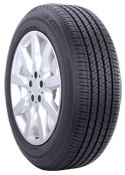
- Platinum Pact Limited Warranty
- All-Season
- Performance
 Turanza QUIETTRACK
Turanza QUIETTRACK
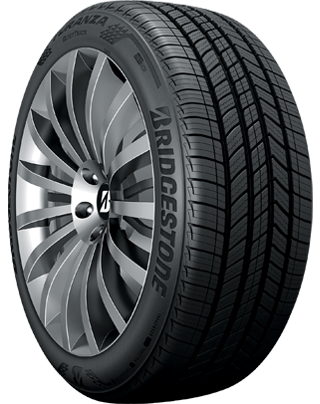
- No warranty
- All-Season
- Performance
 WEATHERPEAK
WEATHERPEAK
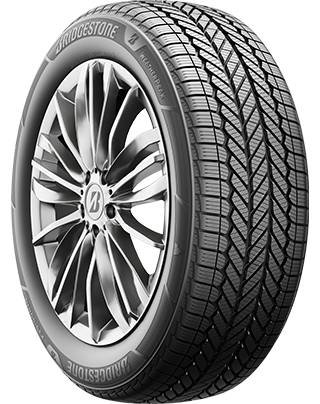
- Platinum Pact Limited Warranty
- All-Season
- Passenger Tires
 Firehawk AS V2
Firehawk AS V2
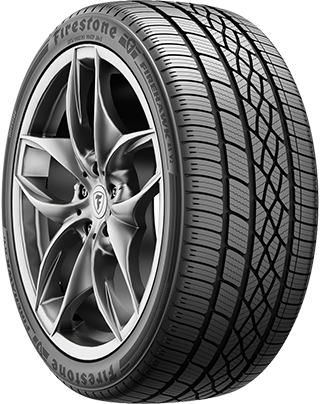
- No warranty
- All-Season
- Performance
 Firehawk Indy 500
Firehawk Indy 500
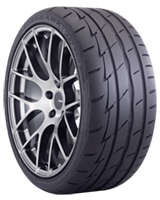
- Gold Pledge Limited Warranty
- Summer
- Performance
 WEATHERGRIP
WEATHERGRIP
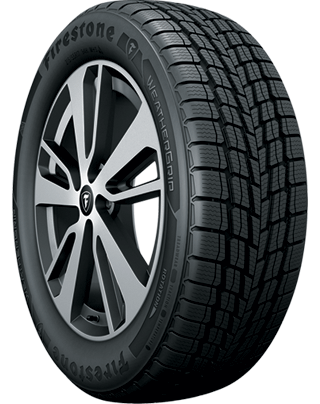
- No warranty
- All-Season
- Passenger Tires
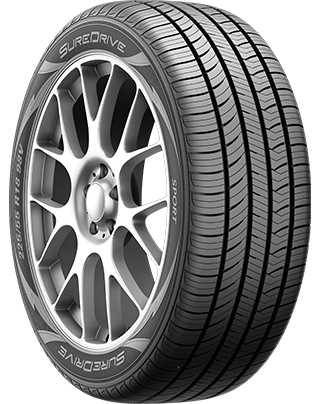
- No warranty
- All-Season
- Performance
 PROXES R1R
PROXES R1R
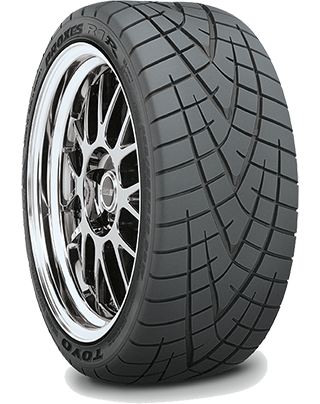
- No warranty
- Summer
- Performance
 PROXES Sport
PROXES Sport
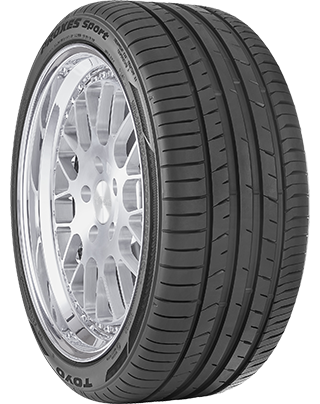
- No warranty
- Summer
- Performance
 PROXES Sport A/S
PROXES Sport A/S
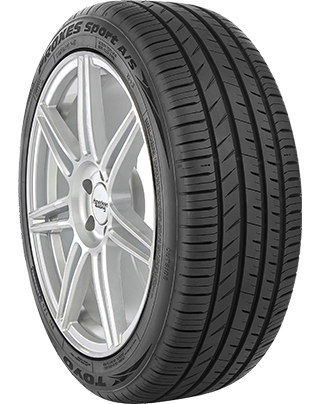
- No warranty
- All-Season
- Performance
2018 Toyota 86 Tire Information
Apart from finding the right tire size, you also want to consider a handful of other factors when buying new Toyota 86 tires like which tire brands you like most and where you drive. When thinking about your driving conditions, consider where you live (mountains vs. city vs. countryside) and the kind of weather can catch you off-guard. (Watch out Tornado Alley!) Drivers in states that fully experience all four seasons often buy two sets of tires: one for summer and one for winter. Other drivers prefer to purchase one all-season set to limit trips to the tire shop and make sure their vehicle is prepared in the rain, sleet, snow, or sun!
Your personal driving style is the next factor to consider. If you're a diehard off-roader, you have very different tire needs than a highway commuter who doesn't leave the paved path. Visit your local Firestone Complete Auto Care for help selecting the tire that's right for you, or get started by browsing tires that fit your Toyota 86.
2018 Toyota 86 Tire Installation & Rotation
Firestone Complete Auto Care has been a leading tire provider for more than a century. We're a tire store that also offers professional tire installation, maintenance, and rotation, along with complete auto care. We make it easy to buy new 2018 Toyota 86 tires online and book an installation appointment at the same time.
2018 Toyota 86 Tire Questions
-
Is Toyota tire inflation important? The right tire pressure can make all the difference. Proper tire inflation helps increase fuel economy, improve braking time, and boost tire lifespan! Even a small change in tire pressure can impact your driving.
-
What do the numbers on my Toyota 86 tires mean? Your tire sidewall numbers tell you the recommended load carrying capacity, speed rating, treadwear, traction, and tire size. Talk to a tire technician to learn how to read Toyota tire numbers.
-
Can I check the tread depth on my Toyota tires at home? Stay on top of your tire tread depth to help avoid a dangerous drive. You can check tread depth with a penny. Hold the penny so that Abraham Lincoln is facing you, then place your penny into a tread groove upside down. If you can see the top of Abe’s head, your tread is shallow and it might be time for new Toyota 86 tires. Grab a penny. Hold the so that Abe Lincon's head is facing you and his hair is pointing toward the ground. Then, place the penny into a tread groove. If you can see the top of Abe’s head, your tread is shallow and it might be time for new Toyota 86 tires.
Types of 2018 Toyota 86 Repairs
How do I learn more about auto repairs? Click on a service below to read about the types of Toyota 86 repairs we do at Firestone Complete Auto Care.
Get Repairs for Your 2018 Toyota 86
No driver looks forward to car repairs. We’re here to change that, though. At Firestone Complete Auto Care, we want to make car repair painless and hassle-free. When it’s time for 2018 Toyota 86 repair services, head to your nearest Firestone location and our technicians will take care of your 86 like it was their own. We’ll start by assessing what repairs may be needed, and we’ll provide you with a detailed explanation of what we recommend. If a repair isn't necessary, we won't recommend it.
What Will Toyota 86 Repairs Cost?
Several factors can affect the cost to repair your 2018 Toyota 86, including what kind of repair you need, the cost of any replacement parts, the amount of labor necessary to get the job done, and where you live. They're updated regularly!
A few different aspects can influence repair costs for your 2018 Toyota 86, like
2018 Toyota 86 Auto Repair Questions
-
Do I still need scheduled maintenance even when nothing is wrong with my Toyota? One of the best ways to prevent 2018 Toyota 86 repairs is by staying on top of your Toyota maintenance schedule. This schedule is written by the people who made your vehicle and they know best how to keep it running smoothly.
-
What's wrong if something feels 'off' in my Toyota? No, we’re not talking about finding the best jams on the radio! You know your car best, and you’re the first person who will notice if something doesn’t feel right (like new smells, sights, or sounds coming from your car). If you sense that something is 'off,' stop in for a Courtesy Check to have these symptoms checked out ASAP. Early action could help you prevent Toyota 86 repairs.
-
Are the repairs you recommend for my Toyota actually needed? We won’t recommend a service or repair for your 2018 Toyota 86 unless we think it’s necessary to keep you safe. Want to know more about a specific recommended repair? Ask! We’re here to help.
2018 Toyota 86 Brake Repair
You might have a strong and reliable engine in your Toyota 86. But if you can’t brake, it might as well be scrap metal. Don't wait if you're experiencing brake squeaks or a loss of braking power. Safe driving is difficult when your brakes are anything but their best. Plus, ignoring your brake problems can result in more damage and higher brake repair bills. Go to your local Firestone Complete Auto Care for 2018 Toyota 86 brake repairs. We offer a variety of brake services like brake pad/shoe removal and replacement, brake rotor/drum resurfacing, brake fluid exchange/bleeding, and brake caliper and wheel cylinder installation.
Toyota 86 Brakes Frequently Asked Questions
-
What can cause my 86 to shake when I apply the brakes? Faulty brake calipers, worn brake pads or rotors, loose or worn suspension parts, and warped rotors can cause your 86 to shake during braking. If you’re experiencing odd brake behavior, schedule a free brake inspection at a nearby Firestone Complete Auto Care.
-
How long should my 86 brake pads last? In general, brake pads can last from 30,000 to 40,000 miles. Certain factors, like driving on highways mostly and braking smoothly, can help your brake pads last longer. Hauling heavy loads and riding your brakes can shorten brake pad lifespan.
-
Does brake fluid leak when the car is off? Your 86 has a closed hydraulic brake system, meaning you should not have a brake fluid leak under normal conditions. However, parts of your brake system can wear out over time or become damaged, which can lead to a brake fluid leak.
Repairing Your Toyota 86 Drivetrain
You don't want to go to just anyone for drivetrain repair. Drivetrains for front, rear, and all-wheel-drive and 4WD vehicles are all different. You want to go to Firestone Complete Auto Care. We can help repair all of your 2018 Toyota 86 drivetrain components Your Toyota could be crying out for driveshaft repair if you notice resistance when turning, heavy vibrations in your floorboards, clunks when shifting, or vibration as your vehicle accelerates.
2018 Toyota 86 Drivetrain Questions
-
What are signs my Toyota drivetrain is damaged? Hear noises toward the back of your Toyota 86? See fluid leaking? Having issues turning? These could all be signs of drivetrain damage you don't want to ignore. Take action quickly to catch repairs or replacements before something more severe happens.
-
Why is the malfunction indicator light (MIL) on in my 86? The malfunction indicator light — also known as the check engine light — on your 86 can illuminate for a variety of reasons, including engine issues, electrical problems, damaged sensors, transmission problems, misfires, and faulty connections.
-
Is a drivetrain malfunction in my 86 serious? If your 86 has a drivetrain malfunction, don't wait. Get it checked out by a professional mechanic. Identifying the underlying cause and performing the appropriate repairs right away can help prevent further damage and avoid unsafe driving conditions.
2018 Toyota 86 Alignment Services
An alignment involves making adjustments to your Toyota 86's suspension system, the connection between the vehicle and the wheels. During the service, the individual angles of your tires are adjusted so that they come into contact with the road in just the right way — the way Toyota intended them to. Before we adjust the alignment of your 2018 Toyota 86, we’ll start by checking the current alignment angles. After that, we can adjust your wheel alignment angles until they match Toyota’s recommended measurements.
Answers to Toyota 86 Alignment Questions
-
How can I avoid knocking my Toyota 86 out of alignment? Hitting a pothole or curb can alter your wheel alignment. So can general wear and tear over time.
-
How frequently should you get a wheel alignment for your 86? Typically, your alignment should be checked every 6,000 miles or 6 months, whichever comes first. Double-check your 86 owner’s manual for Toyota's exact recommended schedule.
-
Do you need to get your 86 wheels aligned? You likely aren't required to get an alignment when you put new tires on your 86, but it's a super smart idea! An alignment can help ensure optimal tire wear, fuel efficiency, and handling. Still, you should reference your 86 owner’s manual for what’s recommended.
2018 Toyota 86 Engine Services
If your 2018 86 engine needs repairs, our technicians will provide you with a thorough explanation beforehand. We don't start working until we have your approval. If a service can wait, we’ll make sure you know. If it's necessary for your safety, we'll make sure you understand that, too. We want to provide you with the information you need to make an informed engine repair decision. By choosing Firestone Complete Auto Care for 86 engine repairs and you can feel good knowing that we only use Toyota-compliant replacement parts such as the timing belt, motor oil seal, sensors, or other parts.
Questions About 2018 Toyota 86 Engines
-
Why does the check engine light in my 86 turn on when I start my car? Generally, your check engine light turning on upon ignition is not a bad thing. It’s just your 86 firing up its circuits. The light should turn off in a bit, but come see us if it doesn't.
-
Why is my Toyota 86 making engine noise? Strange under-the-hood noises can point to problems within your Toyota 86 engine. Tapping or knocking could mean you need an oil change. Whistling sounds could mean you have an intake leak or misaligned belt. Squealing may be caused by a loose fan belt, and grinding could be a sign that something is wrong with your brakes — not the engine.
-
What could damage my Toyota 86 engine? Some driving habits are not so great for your engine. These include driving on a near-empty gas tank, flooring the gas pedal while the car is in Park, or accelerating too quickly, too soon. Protect your engine’s performance and efficiency by distancing yourself from these habits.
2018 Toyota 86 Tire Repair
If your 2018 Toyota 86 is in need of a tire inspection or possible flat tire repair, Firestone Complete Auto Care has your back. There’s a chance your tire could be plugged and patched (rather than replaced). Our technicians can inspect your tire and let you know if it is safe to repair. We’ll begin by taking a look at where the damage is, the type and extent of the tire damage, and how all of your tires are wearing.
If we determine that your 2018 Toyota 86 tire can be safely repaired, we’ll get to work on the steps to fix it: (1) Take the tire off the wheel for easy inspection, (2) use a filler to close up the puncture (this is to keep moisture from getting in), and (3) secure and seal the inner tire liner to ensure the tire is airtight.
Your Questions About Toyota 86 Tire Repair, Answered
-
What happens if I drive my Toyota on a flat tire? Driving on a flat tire is not a good idea. Your 86 engine will keep running with a flat tire, but you could damage your wheel by continuing to drive on a flat.
-
Will a temporary sealant fix my Toyota's flat tire? A temporary sealant may be able to help you get to a repair location safely. But temporary or emergency sealants could possibly damage TPMS sensors, and in some cases may even void the warranty on your Bridgestone or Firestone tires. If your tire needs extensive repair, sealant can add time and labor costs to the process.
-
Why do the tires on my 86 keep losing air? Your 86 tires might keep losing air due to a leaking valve stem, puncture or hole in the tire tread or sidewall, or damaged wheel.
Maintenance for Your 2018 Toyota 86
Take care of your Toyota 86 and it'll take care of you. With the right maintenance at the right time, your 86 has a good chance of hitting 200,000 miles or more.
2018 Toyota 86 Maintenance Schedule
What is the manufacturer recommended maintenance schedule for a 2018 Toyota 86? Find maintenance info for your vehicle.
About 2018 Toyota 86 Scheduled Maintenance
It can be overwhelming, but fortunately, there’s a resource that takes the guesswork out of routine 86 maintenance. It’s as easy as following the recommended maintenance schedule that’s been written specifically for your 2018 Toyota 86! The recommended maintenance schedule is put together by Toyota, your vehicle manufacturer. Scheduled maintenance services can vary depending on driving conditions, climate, and other factors; however, recommended maintenance usually includes services like oil changes, tire rotations, brake pad replacement, filter changes, and fluid checks and exchanges. Keeping up with routine service appointments is a great way to keep your 86 running for longer, keep you safer on the road, and help you avoid expensive repairs caused by 2018 Toyota 86 problems later.
Learn About Vital Maintenance Needs for Your Toyota 86
Bring your 2018 Toyota 86 to Firestone Complete Auto Care for factory-recommended maintenance services and our technicians will jump right in with a Courtesy Check. The Courtesy Check helps us see what we’re working with under the hood, and allows us to alert you to any potential problems before they worsen. Every Courtesy Check will include a visual inspection of your 86. We’ll check your head and tail lights, fluid levels, filters, tires (and their alignment!), and windshield wiper blades. We’ll also perform a free battery check to determine your battery’s charge level.
Firestone Complete Auto Care is your spot for 2018 Toyota 86 maintenance. Don’t wait until something goes wrong with your car. Visit your nearest location for proactive maintenance today.
2018 Toyota 86 Maintenance Q&A
-
What should I do after hitting a pothole in my Toyota 86? Watch out for pothole damage. If your 2018 86 is pulling to one side or the other, your tires or suspension system could be calling out for help.
-
When does my Toyota 86 need high mileage oil? If your Toyota 86 has ticked past 75,000 miles, consider switching to high mileage oil at your next oil change to give your engine what it needs to go another 75,000 (or more!). High mileage oil: make it a high priority!
-
Why are my Toyota dashboard lights on? It's better to get them addressed as soon as possible. An illuminated dashboard light means something in your vehicle isn't functioning like it should. Letting problems linger can mean bad news for your Toyota 86, so be sure to take your car in for service as soon as you notice an illuminated dashboard light.
Battery Size & Replacement for 2018 Toyota 86
Not sure what battery to get for your Toyota 86?
| Battery | Engine | Warranty | Cold Cranking Amps | |
|---|---|---|---|---|
| 35-1 | H4/2.0L | Replacement 24 months | Performance months | 500 |
| 35-2 | H4/2.0L | Replacement 36 months | Performance months | 640 |
| 35-AGM | H4/2.0L | Replacement 36 months | Performance months | 650 |
Car Batteries for 2018 Toyota 86
The average car battery lasts three to five years. You want to replace your 2018 Toyota 86 battery before it fails and leaves you stranded. Look out for symptoms of a faulty car battery. A slow engine crank, a blinking battery or check engine light, swollen battery case, corroded battery posts, or weak lights can all signal that your battery is waving goodbye.
Plus, at Firestone Complete Auto Care, we’ll test your battery for free. Stop by for a free battery test and, if necessary, a battery replacement to help keep your 2018 Toyota 86 running! Car batteries are only one of our many strong suits. Our expert technicians understand Toyota service recommendations for 86 battery cold cranking amps and reserve capacity. Get help identifying the type and size of battery that matches your vehicle, and schedule an appointment today for a quick car battery replacement.
Answers to Your Toyota 86 Car Battery Questions
-
Why won’t my Toyota 86 battery hold a charge? A battery is in its final hour when it will no longer hold a charge. The battery may be too old. Or, you may have been leaving your car doors ajar and the cabin light at night. Stop by for a complimentary battery check at your favorite Firestone Complete Auto Care and get a handle on your car battery’s health.
-
What is the average lifespan of a car battery? Car battery lifespan varies depending on a few factors, including driving conditions, accessories, how well it’s maintained, and the type of battery. On average, a car battery lasts about three to five years.
-
What is the white, crusty substance accumulating on my 86’s battery post? If you notice white, crusty stuff around the battery terminals of your 86, it's likely corrosion. A chemical reaction between battery acid and the air can create a white, powdery substance that builds up over time on the terminals. This buildup can interfere with the electrical connection between the battery and your 86’s electrical system, potentially leading to poor performance, difficulty starting, and other issues.
2018 Toyota 86 Oil Change Service
Toyota recommends having your 2018 Toyota 86’s motor oil changed at regular intervals. Outside of Toyota-recommended oil change intervals, your 86 may need an oil change if your check engine light is on, you hear knock knock knock coming from the engine, smell oil inside the vehicle, or notice excess vehicle exhaust. You may also need an oil change more frequently than Toyota recommends if you haul heavy loads, frequent dusty roads, adventure off-road, or go long distances at low speeds.
Whether you need high mileage oil, synthetic oil, or conventional oil, you'll find the right 2018 Toyota 86 motor oil at Firestone Complete Auto Care. Talk with a teammate and consult your owner's manual before picking a motor oil. At Firestone Complete Auto Care, you can choose from the following oils: Quaker State® Advanced Durability™ conventional oil, Pennzoil® High Mileage Vehicle® motor oil, Pennzoil Platinum® Full Synthetic motor oil with PurePlus™ Technology, and Shell Rotella® heavy-duty engine oil. In an oil change service, an auto technician will change your 86’s oil, replace and recycle your used oil and oil filter, inspect all of your other filters, refill vital car fluids, and visually inspect the rest of the vehicle. Make an appointment for an oil change service today and let the oil experts take care of your 86's engine.
Oil Change Q&A for Your 2018 Toyota 86
-
Why is my Toyota 86 oil light illuminated? Your Toyota 86 oil change reminder light might illuminate if it’s been too long since your last oil change. On the other hand, the oil pressure light might illuminate due to a clogged oil filter, a faulty oil pressure sensor, low engine oil levels, or a malfunctioning oil pump.
-
Can I change my Toyota 86 oil at home? Changing your own oil isn't as convenient as you might think. It requires special tools and old oil must be disposed of properly. Having your oil professionally changed reduces the chances of something going wrong with the oil change, but also with your vehicle down the road.
-
Why is my Toyota exhaust smoke gray or blue? There could be an oil leak and your engine is burning oil. Time to have a qualified technician check things out. The leak could be caused by several issues like leaking valve seals, damaged piston rings, or worn cylinder walls.
2018 Toyota 86 Engine Tune-Ups & Maintenance
Regular engine tune-ups can optimize your 86’s power on the road. Your nearest Firestone Complete Auto Care location has several options to choose from when it comes to Toyota 86 engine tune-up services. The first is the standard Firestone Tune-Up. The standard Firestone Tune-Up includes new spark plugs (and installation!), a thorough inspection of engine components, and a lifetime parts warranty*. The second service focuses on your 86's filters, specifically replacing the air filter and fuel filter. The third tune-up option is a fuel system cleaning service, which is a three-step process that removes varnish, dirt, and carbon deposits on your 86's fuel injectors, throttle body, and throttle plate. This goes a long way in boosting your fuel system’s overall performance. Keep in mind that your 86's mileage and maintenance history can uniquely impact its tune-up needs. Talk to a technician about your driving style, mileage, and service history to learn more about your vehicle's specific needs.
*Talk to a Firestone Complete Auto Care teammate for full terms and conditions on warranties.
2018 Toyota 86 Engine Tune-Up Q&A
-
When should Toyota 86 spark plugs be replaced? When it’s time to replace the spark plugs, don’t delay. These small (but vital!) parts provide the electric spark that your car needs in order to start, and old spark plugs can prevent your car from starting at all. Replace spark plugs on time or about every 30,000 miles or so.
-
What should I do if I see leaks under my 86? Don't ignore puddles of fluid under your Toyota 86. It could signal a coolant leak, brake fluid leak, or an oil leak. Let any one of these leaks linger and it could cause engine damage.
-
How often should I clean my Toyota 86 fuel injectors? There is no hard and fast rule on how often fuel injectors should be cleaned, and it can vary based on driving habits and fuel type. Some manufacturers may suggest including a fuel system cleaning in your regular maintenance schedule. Or you may need to clean your fuel injectors as needed if you notice signs of a fuel system problem.
2018 Toyota 86 Suspension Service & Repair
When you first bought your 2018 Toyota 86, you and your passengers probably enjoyed a ride that was smooth and balanced. Now, however, things are starting to feel a little rough. Perhaps your 86 feels bouncy, sways to one side, or makes an unusual noise when going over a speed bump. The first sign of problems is a good time to bring your 2018 Toyota 86 in for steering and suspension repairs. We’ll get to the root of the issue and, if steering and suspension service is needed, we'll explain all of your options and the potential cost.
Questions About 2018 Toyota 86 Steering & Suspension
-
Why is my Toyota 86 bouncing excessively? If your shocks or struts are in bad shape, they can’t dampen road bumps like they should. This can cause your 86 to bounce more than usual.
-
What can cause the front end of my 86 to dip forward when I apply the brakes? The forward dip in the front end of your 86 when you brake is caused by the weight and momentum transferring to the front wheels. If your suspension system is in bad shape, it can fail to distribute this force, leading your front end to dip further downward.
-
Does treadwear and tire pressure impact my 86's steering and suspension? Keeping your tires properly inflated can help reduce strain on the suspension, and also help you notice when you need new tires. A tire that doesn't have an adequate amount of tread can't grip the road or function as well as the manufacturer intended.
2018 Toyota 86 A/C Service Near You
Our technicians will work to solve your 2018 Toyota 86 A/C problems to the best of their ability. During this initial A/C performance check, we’ll look at the state of your 2018 Toyota 86’s A/C system to evaluate what repairs are necessary (if any). We’ll test overall system performance, check for any leaks, and measure the system pressure.
When we perform an A/C repair on your 2018 Toyota 86, we’ll also do an A/C evacuation and recharge. During this process, a technician will remove the old refrigerant from the A/C system. Next, they will evacuate the system according to Toyota's recommendations. The A/C system is recharged with new refrigerant.
Questions About 2018 Toyota 86 A/C Systems
-
What’s making my 86 A/C put out warm air? Maybe your A/C starts cool but then gets warm. Or maybe it never gets cold in the first place. Either way, your A/C troubles could be traced back to a clogged expansion valve, faulty compressor clutch, blown fuse, or leak.
-
What can cause an A/C system leak? Over the years, the rubber seals and gaskets in your 86’s A/C system naturally degrade. Moisture can get into the system and cause a malfunction, or parts can simply wear out so that your system no longer seals properly.
-
What is causing my 86’s A/C to only work when the car is in motion? A problem with one or more of your air conditioning or electrical system components could cause the A/C to only work when your 86 is moving. You may be low on refrigerant, or the cooling fan could be faulty.
2018 Toyota 86 Transmission Service
Your transmission carries power from the engine to the wheels so that you can drive at the speed you desire. Because of the transmission’s responsibility to translate the right dose of power into the right amount of speed, a small transmission issue can put a big dent in your 86’s performance. 2018 Toyota 86 transmission problems can show up as shifting delays, grinding when accelerating, a feeling of shakiness, or whistling noises and a burning smell coming from under the hood. Let Toyota 86 transmission problems linger and you might notice your fuel economy decrease or discover that your 86’s not even driveable. Our expert techs are familiar with 2018 86 services and perform them according to Toyota-recommended specifications. If you think there’s something wrong with your 86’s transmission, schedule an appointment at your local Firestone Complete Auto Care to help keep your Toyota running for miles and miles.
Questions About 2018 Toyota 86’s Transmission
-
How often does my 86 transmission fluid need to be checked? Regularly checking and exchanging your 2018 86’s transmission fluid is one of the best ways to help the transmission system perform. Some technicians would say that between 30,000 and 60,000 miles is a good timeframe for having your Toyota's transmission fluid checked and replaced, but that timeline can vary depending on how your vehicle is used and your manufacturer’s recommendations. The good news is that transmission fluid leaks are affordable to repair and easy to spot.
-
Is it possible for transmission fluid to leak from my Toyota 86? Over time, transmission fluid can leak from your Toyota 86, potentially causing transmission problems. A transmission fluid leak may be caused by a damaged transmission pan, faulty transmission cooler lines, worn-out seals, a cracked transmission housing, or an overfilled transmission.
-
Can I still drive my Toyota 86 if it has a transmission fluid leak? Driving with a transmission fluid leak is not recommended. Transmission fluid is essential to the proper operation of the transmission system, and a leak can cause serious problems, including reduced performance, overheating, and potentially transmission failure.
2018 Toyota 86 Inspections
Every service performed at Firestone Complete Auto Care includes a multi-point Courtesy Check. First, a technician will pop the hood on your Toyota 86 and test the battery to determine how much charge remains. The check will continue with a visual inspection of your Toyota 86's windshield wiper blades, lights, filters, fluid levels, belts, hoses, tires, and alignment.
We perform a Courtesy Check any time you bring your car to a local Firestone Complete Auto Care for service, but we can also dig deeper and perform a Complete Vehicle Inspection on your 2018 Toyota 86 if you prefer. In addition to a visual check of everything that's included in a Courtesy Check, a Complete Vehicle Inspection also includes an examination (by hand!) of your steering and suspension system, brakes, and exhaust components. With this inspection, we want to help you stay on top of any issues that may wreak havoc on your 2018 Toyota 86 if left unaddressed.
Depending on where you live, your local Firestone Complete Auto Care may be able to perform state-mandated inspections or safety tests on your vehicle. Inspections are performed on a state-by-state basis and requirements vary.
FAQs for 2018 Toyota 86 Vehicle Inspections
-
How do I know if I should have an inspection on my Toyota 86? It needs a check-up if something feels 'off' to you, the driver. Your Toyota 86 could benefit from a Courtesy Check if it has any illuminated dashboard lights, you hear weird noises coming from any part, the engine doesn't start sometimes, or your vehicle pulls to one side.
-
My 2018 Toyota 86 failed the state inspection test. Can you fix it? Don’t panic! Come in for a complete inspection today and we’ll find (and repair) the root cause before you have your vehicle retested.
-
When should I get a complete vehicle inspection for my Toyota 86? The best time to get a complete vehicle inspection for your Toyota 86 is before going on a road trip for the peace of mind. Another great time is when something abnormal occurs, and you can't pinpoint the issue. You might notice new dashboard lights, hear strange noises from under the hood, or your steering wheel doesn't feel like it once did.
2018 Toyota 86 Radiator Repair & Service
Staying on top of routine radiator maintenance for your 2018 Toyota 86 is essential for long-term engine health. Toyota recommends that you replace coolant (also called antifreeze) at certain intervals, but it’s a good idea to keep your eyes open for any indication that your radiator is failing. You might be driving around (or about to be stranded) with a failing radiator if you notice a low coolant light or higher-than-normal engine temperatures on your dashboard, or if you spot coolant leaks coming from your car.
When you come to Firestone Complete Auto Care, we’ll begin your radiator repair with an in-depth inspection of the cooling system in your Toyota 86. We then do a machine-powered radiator exchange, replenish flushed chemicals, sealants, and lubricants, and then pressure check for leaks. When it comes to radiator service and repair, we’re here to give your 2018 Toyota 86 the top-notch service it needs.
Questions About Toyota 86 Radiators
-
What does the coolant light on my Toyota dashboard mean? Your engine might be about to overheat. If your low coolant light is on, pull over in a safe area and wait for your engine temperature to go down. Once it’s safe to do so, bring your car to your nearest Firestone Complete Auto Care to have the coolant system inspected.
-
What is causing my 86 to overheat? If your Toyota 86 engine overheats, it could be because of a clogged radiator, a damaged thermostat, a faulty cooling fan, a malfunctioning water pump, or low coolant levels.
-
Why does the radiator in my 86 sound like it’s rumbling or boiling? Your 86’s cooling system could contain air pockets or your radiator might be clogged. Another possibility is a faulty radiator cap, which is an easy fix!